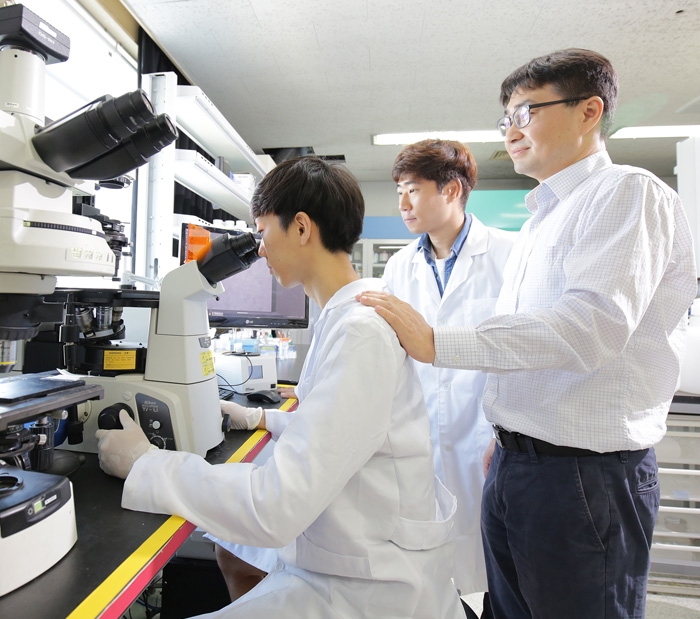Research Stories
Profs. Gi-Ra YI & Jaeyun KIM's Study on Vanishing Colloidal Mesoporous Nanoparticles to Heal Wounds
The research team under Profs. Gi-Ra YI and Jaeyun KIM at Sungkyunkwan University's Department of Chemical Engineering have developed a colloidal mesporous nanoparticle solution that has the potential to rapidly and and effectively close wounds in the skin when it spreads, then degrades away after the wound heals.
Chemical Engineering
Prof.
YI, GI RA
The research team under Profs. Gi-Ra YI and Jaeyun KIM at Sungkyunkwan University's Department of Chemical Engineering have developed a colloidal mesporous nanoparticle solution that has the potential to rapidly and and effectively close wounds in the skin when it spreads, then degrades away after the wound heals.
Figure 1. Schematic illustration of wound healing process on mouse skin by applying mesoporous nanoparticles
The fundamental research behind the rapid wound closure is the high surface area of the colloidal mesoporous silica nanoparticles in which extracellular matrixes within biological tissues are strongly absorbed on the surface of the nanoparticles; therefore, the wound is rapidly closed. By introducing the mesopores and controlling the average diameters on the surface, the research team has shown increases of up to 10 times more adhesion energy compared to nonporous silica nanoparticles, even at 10 times lower concentration.
Figure 2. Graphical illustration of extracellular matrixes interacting on the surface of mesoporous nanoparticles
The team has also compared the use of colloidal mesoporous silica nanoparticles with conventional suturing and chemically treating agents in wound closure. The result confirmed that the colloidal mesoporous silica nanoparticles are much more convenient to use, the adhesion was stronger, and most importantly, there were no signs of inflammation or scars.
Figure 3. In vivo comparison of wound healing on mice by methods and time
Once the wound is closed and healed, the colloidal mesoporous silica nanoparticles degrade easily in biological media. The fact that colloidal silica nanoparticles degrade is advantageous, confirming the possibility of being used as biocompatible adhesive material.
The research was supported by the Engineering Research Center and the Bank of Porous Nanoparticles from the National Research Foundation (NRF) of Korea, and was published in the journal ACS Applied Materials and Interfaces (Impact Factor 7.504) on August 24th, 2017.
Title: Colloidal Mesoporous Silica Nanoparticles as Strong Adhesives for Hydrogels and Biological Tissues
Authors: Joo-Hyung KIM (Research Assistant), Hodae KIM (M.S.), Youngjin CHOI (Ph.D), Doo Sung LEE (Professor), Jaeyun KIM (Associate Professor), and Gi-Ra YI (Associate Professor)
The research team is currently continuing this study to combine wound healing agents for colloidal mesoporous silica nanoparticles capable of dual rapid closure/healing treatments.

